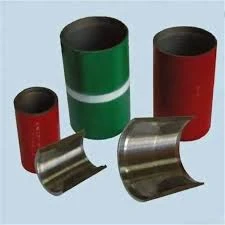- Afrikaans
- Albanian
- Amharic
- Arabic
- Armenian
- Azerbaijani
- Basque
- Belarusian
- Bengali
- Bosnian
- Bulgarian
- Catalan
- Cebuano
- Corsican
- Croatian
- Czech
- Danish
- Dutch
- English
- Esperanto
- Estonian
- Finnish
- French
- Frisian
- Galician
- Georgian
- German
- Greek
- Gujarati
- Haitian Creole
- hausa
- hawaiian
- Hebrew
- Hindi
- Miao
- Hungarian
- Icelandic
- igbo
- Indonesian
- irish
- Italian
- Japanese
- Javanese
- Kannada
- kazakh
- Khmer
- Rwandese
- Korean
- Kurdish
- Kyrgyz
- Lao
- Latin
- Latvian
- Lithuanian
- Luxembourgish
- Macedonian
- Malgashi
- Malay
- Malayalam
- Maltese
- Maori
- Marathi
- Mongolian
- Myanmar
- Nepali
- Norwegian
- Norwegian
- Occitan
- Pashto
- Persian
- Polish
- Portuguese
- Punjabi
- Romanian
- Russian
- Samoan
- Scottish Gaelic
- Serbian
- Sesotho
- Shona
- Sindhi
- Sinhala
- Slovak
- Slovenian
- Somali
- Spanish
- Sundanese
- Swahili
- Swedish
- Tagalog
- Tajik
- Tamil
- Tatar
- Telugu
- Thai
- Turkish
- Turkmen
- Ukrainian
- Urdu
- Uighur
- Uzbek
- Vietnamese
- Welsh
- Bantu
- Yiddish
- Yoruba
- Zulu
bull plug wellhead
Understanding Bull Plug Wellheads An Essential Component in Oil and Gas Operations
In the oil and gas industry, efficient management of well operations is crucial for maximizing production and ensuring safety. One of the key components that play an integral role in this process is the bull plug wellhead. This specialized equipment is designed for various functions in well control, maintenance, and pressure management, making it a vital asset in modern drilling operations.
What is a Bull Plug Wellhead?
A bull plug wellhead is a reinforced piece of equipment situated at the surface of an oil or gas well. Primarily, it serves as a barrier between the well and the external environment. The bull plug itself is a pressure-containment device that can be used to seal the well during certain operations. It is designed to plug the well when it is not in production, thereby preventing any unintended flow of hydrocarbons. The term “bull plug” refers to its capability to withstand high pressures and serve as a robust seal for various applications.
Key Functions and Features
The bull plug wellhead is crucial during different stages of well operations, including drilling, production, and decommissioning. Its main functions include
1. Pressure Control Bull plugs can manage wellbore pressure effectively. During drilling operations, maintaining wellbore pressure is essential to prevent blowouts and well failures.
2. Well Isolation Bull plugs provide an excellent means to isolate the well from surface operations, ensuring that all work can be conducted safely without the risk of hydrocarbons escaping.
3. Adaptability These wellheads are adaptable and can be integrated with various other wellhead components, such as valves, gauges, and blowout preventers (BOPs), to enhance overall operational efficiency.
bull plug wellhead

4. Emergency Shutdown In case of an emergency, bull plugs can quickly shut off the flow of hydrocarbons. This is vital for protecting personnel and the environment.
5. Maintenance and Workover Operations During maintenance periods or workovers, bull plugs help in isolating the section of the well that is being serviced, minimizing the risk associated with pressure release.
Installation and Maintenance
Proper installation and maintenance of bull plug wellheads are critical for their performance. During installation, operators must ensure that all seals are tight and that the bull plug is appropriately positioned within the wellhead assembly. Regular inspection and testing under varying pressure conditions are necessary to guarantee their operational integrity.
Maintenance routines often include checking for wear and tear, ensuring that all components function smoothly, and replacing any damaged parts promptly. These practices not only extend the lifespan of the bull plug but also enhance safety and efficiency during operations.
Safety and Environmental Impact
Safety is paramount in the oil and gas industry, and bull plug wellheads contribute to a safer work environment. By effectively managing well pressure and preventing leaks, they mitigate the risk of accidents. Furthermore, adhering to environmental regulations is crucial. The use of bull plugs in well operations minimizes the chances of hydrocarbon spills, thus protecting surrounding ecosystems.
Conclusion
In conclusion, bull plug wellheads are essential components in the oil and gas industry that ensure safe and efficient well operations. Their functionality in pressure control, well isolation, and emergency shutdown capabilities makes them invaluable during drilling and maintenance activities. As the industry continues to evolve and prioritize safety and environmental stewardship, the role of bull plug wellheads will remain crucial in supporting these objectives. Emphasizing the need for regular maintenance and proper installation will ensure their effectiveness and contribute to the overall success of oil and gas operations.
-
Tubing Pup Joints: Essential Components for Oil and Gas OperationsNewsJul.10,2025
-
Pup Joints: Essential Components for Reliable Drilling OperationsNewsJul.10,2025
-
Pipe Couplings: Connecting Your World EfficientlyNewsJul.10,2025
-
Mastering Oilfield Operations with Quality Tubing and CasingNewsJul.10,2025
-
High-Quality Casing Couplings for Every NeedNewsJul.10,2025
-
Boost Your Drilling Efficiency with Premium Crossover Tools & Seating NipplesNewsJul.10,2025







